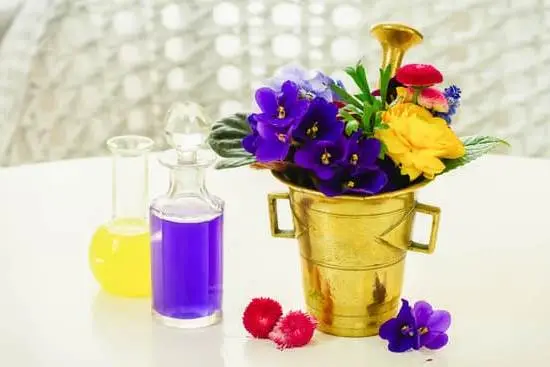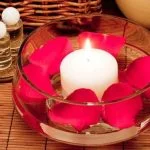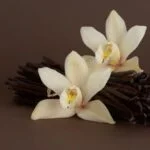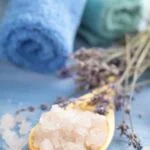Aromatherapy is a holistic healing treatment that uses natural plant extracts to promote health and well-being. In this article, we will explore the benefits of using fresh herbs for aromatherapy and provide a comprehensive guide on how to effectively incorporate them into your wellness routine.
From understanding the different types of fresh herbs commonly used in aromatherapy to exploring blending techniques and application methods, you will learn everything you need to know about harnessing the power of nature’s botanicals for aromatherapy.
Using fresh herbs for aromatherapy can have a myriad of benefits for both the mind and body. Whether it’s creating a calming environment with lavender, uplifting your spirits with citrusy bergamot, or relieving stress with soothing chamomile, the therapeutic properties of fresh herbs can enhance your overall well-being. In this introductory section, we will delve into the basics of aromatherapy and how harnessing the scents and properties of fresh herbs can elevate your self-care practices.
Throughout this article, we will cover everything from harvesting and storing fresh herbs to safely using them in various applications. Whether you’re an experienced herbalist or new to the world of aromatherapy, this guide will equip you with the knowledge and skills needed to seamlessly integrate fresh herbs into your wellness routine. Let’s embark on a fragrant journey through the world of herbal aromatherapy together.
Understanding the Different Types of Fresh Herbs
When it comes to using fresh herbs for aromatherapy, there are several different options to choose from, each with its own unique properties and potential benefits. Here are some of the most commonly used herbs for aromatherapy, along with a brief overview of their characteristics:
- Lavender: Known for its calming and soothing effects, lavender is often used in aromatherapy to promote relaxation and reduce stress. It can also help with insomnia and anxiety.
- Peppermint: With its invigorating and energizing scent, peppermint is often used to promote mental clarity and alleviate symptoms of headaches and migraines. It can also aid in digestion and alleviate muscle aches.
- Rosemary: This herb is commonly associated with improved memory and cognitive function, making it a popular choice for enhancing focus and concentration during aromatherapy sessions. It may also have mild pain-relieving properties.
In addition to these well-known herbs, there are many others that can be used for aromatherapy, each with its own set of potential benefits. Some examples include chamomile (known for its calming effects), eucalyptus (often used to ease respiratory issues), and bergamot (believed to have mood-boosting properties).
Overall, understanding the different types of fresh herbs commonly used for aromatherapy can help individuals customize their approach to this practice based on their specific needs and preferences.
When considering how to use fresh herbs for aromatherapy, it’s important to take into account the unique properties of each herb in order to create personalized blends that serve a variety of purposes. Whether it’s promoting relaxation, boosting mood, or improving mental clarity, the diverse range of fresh herbs available makes it possible to tailor aromatherapy experiences to individual wellness goals.
Harvesting and Storing Fresh Herbs
When it comes to using fresh herbs for aromatherapy, the quality of the herbs you use plays a crucial role in the effectiveness of your practice. This is why knowing how to properly harvest and store fresh herbs is essential for anyone interested in incorporating them into their aromatherapy routines. By following some simple tips and techniques, you can ensure that your fresh herbs retain their potency and fragrance for optimal aromatic benefits.
Harvesting Fresh Herbs
The best time to harvest fresh herbs for aromatherapy is usually in the morning when the aromatic oils are at their peak. Use sharp scissors or pruning shears to snip off healthy branches or leaves, making sure not to damage the plant’s overall growth. It’s important to only take what you need and leave enough foliage for the plant to continue thriving. Depending on the herb, you may be able to harvest multiple times throughout the growing season.
Storing Fresh Herbs
Proper storage is key to preserving the freshness and potency of your harvested herbs. After harvesting, gently wash the herbs under cool water and pat them dry with a clean towel or paper towel.
To store these herbs, consider air drying them by hanging them upside down in small bunches in a well-ventilated area away from direct sunlight. Another method for preserving fresh herbs is by freezing them either whole or chopped in an air-tight container or freezer bag.
Preserving Aroma
To maintain the strong aroma of your fresh herbs for aromatherapy, it’s best to store them whole until ready for use. Crushing or grinding the herbs should be done just before use as this allows maximum exposure of aromatic oils at that moment. When properly harvested and stored, fresh herbs can be a valuable resource for creating personalized aromatherapy blends that promote relaxation, rejuvenation, and overall well-being.
Preparation Methods
When it comes to using fresh herbs for aromatherapy, proper preparation is key to unlocking their therapeutic benefits. Whether you are working with freshly harvested herbs from your garden or purchasing them from a local market, here are some detailed instructions on how to prepare fresh herbs for use in aromatherapy:
1. Drying: Drying fresh herbs is one of the most common methods of preserving them for later use in aromatherapy. To dry herbs, you can hang them upside down in small bundles in a warm and well-ventilated area. Alternatively, you can place the herbs on a drying rack or a tray and let them air dry naturally. Once the herbs are completely dry, store them in an airtight container away from sunlight to preserve their potency.
2. Crushing: Crushing fresh herbs is another way to release their aromatic oils and enhance their effectiveness in aromatherapy. You can use a mortar and pestle to gently crush the dried herbs or simply rub them between your palms to break down the plant material. Avoid crushing the herbs too forcefully, as this can cause them to lose their essential oils prematurely.
3. Extracting Oils: For those looking to create potent herbal essential oils for aromatherapy, there are various extraction methods such as steam distillation, cold pressing, and maceration. Steam distillation involves using steam to extract the essential oils from the plant material, while cold pressing is commonly used for citrus fruits. Maceration involves soaking the plant material in a carrier oil to infuse it with the herb’s properties.
By following these steps on how to prepare fresh herbs for aromatherapy, you can ensure that you are getting the most out of your herbal supplies when creating your own homemade skincare products or herbal remedies. Whether you are making herbal sachets or room sprays, understanding these preparation methods will help you harness the full potential of fresh herbs for aromatherapy applications and enjoy their therapeutic benefits at home.
Blending Techniques
Blending fresh herbs for aromatherapy is an art that allows individuals to create customized scents and therapeutic properties. By combining different herbs, one can experience a unique and personalized aromatic experience that caters to their specific needs. Whether it’s for relaxation, stress relief, or energy-boosting, blending techniques offer a wide range of possibilities for aromatherapy enthusiasts.
Understanding the Properties of Fresh Herbs
Before delving into blending techniques, it’s important to understand the properties of the different fresh herbs used in aromatherapy. Each herb boasts its own distinct scent and therapeutic benefits, such as lavender for relaxation, peppermint for invigoration, and eucalyptus for respiratory support. By familiarizing oneself with these properties, individuals can make informed decisions when creating their own blends.
When mixing fresh herbs for aromatherapy purposes, it’s essential to consider how their scents and properties complement each other. Some herbs may have synergistic effects when combined, enhancing their individual benefits and creating a more complex aroma. Experimenting with different combinations and proportions can lead to the discovery of harmonious blends that cater to specific needs and preferences.
Creating Personalized Aromatherapy Blends
One of the joys of blending fresh herbs for aromatherapy is the ability to create personalized scents that resonate with individuals on a deeper level. Whether it’s crafting a calming blend for relaxation or an uplifting blend for mood enhancement, the process allows for artistic expression and self-discovery. By taking the time to explore various combinations and noting personal reactions to different scents, individuals can curate blends that speak to their unique preferences and goals.
By understanding the properties of various fresh herbs used in aromatherapy and experimenting with different combinations, individuals can unlock the full potential of blending techniques. Whether it’s creating a signature scent or addressing specific wellness needs, blending fresh herbs offers a creative outlet and a means of harnessing nature’s therapeutic benefits in a personalized way.
Application Methods
When it comes to utilizing fresh herbs for aromatherapy, there are numerous methods that you can explore. One of the most popular ways to use fresh herbs is through the use of essential oil diffusers.
These devices allow you to release the natural fragrance and therapeutic properties of the herbs into the air, creating a calming and uplifting atmosphere in your home or workspace. Simply add a few drops of your preferred herb-infused essential oil to the diffuser and let it work its magic.
Another effective method for enjoying the benefits of fresh herbs for aromatherapy is by incorporating them into herbal baths. Adding a handful of fresh herbs such as lavender, chamomile, or peppermint to your bathwater can create a soothing and rejuvenating experience. Not only will the aromatic steam help to relax your mind and body, but the natural oils and compounds present in the herbs can also nourish and revitalize your skin.
For those interested in creating their own holistic skincare products, using fresh herbs can be a game-changer. You can infuse carrier oils with dried herbs to make herbal-infused oils that can be used in various homemade skincare formulations such as massage oils, balms, lotions, and creams. This allows you to tailor your skincare routine according to your specific needs while harnessing the healing properties of fresh herbs.
| Application Method | Description |
|---|---|
| Essential Oil Diffusers | Devices that release the natural fragrance and therapeutic properties of herbs into the air. |
| Herbal Baths | Incorporating fresh herbs like lavender or chamomile into bathwater for a soothing experience. |
| Homemade Skincare Products | Infusing carrier oils with dried herbs for use in massage oils, balms, lotions, and creams. |
Safety Precautions
When using fresh herbs for aromatherapy, it is essential to be aware of potential risks and contraindications to ensure safe and effective use of these natural products. While aromatherapy can offer numerous benefits, improper use of fresh herbs can lead to adverse reactions or complications, especially for individuals with certain health conditions or sensitivities. By understanding the safety precautions associated with using fresh herbs in aromatherapy, you can enjoy the therapeutic properties of these natural ingredients while minimizing potential risks.
First and foremost, it is crucial to research and understand the specific properties of each fresh herb before using it for aromatherapy purposes. Some herbs may have strong effects on the body and mind, which could be problematic for certain individuals.
For example, some herbs may have stimulating or sedative properties that could interact with medications or exacerbate certain health conditions. Additionally, some people may have allergies or sensitivities to specific herbs, so it’s important to perform a patch test before using a new herb for aromatherapy.
Another important safety precaution when using fresh herbs for aromatherapy is proper dilution and dosage. Essential oils derived from fresh herbs are highly concentrated substances that should always be diluted before applying to the skin or inhaling. Using undiluted essential oils can cause skin irritation, allergic reactions, or other adverse effects. Always follow recommended guidelines for diluting essential oils and seek guidance from a qualified aromatherapist if needed.
Lastly, pregnant women, nursing mothers, young children, elderly individuals, and those with chronic health conditions should exercise caution when using fresh herbs for aromatherapy. Some herbs may not be suitable for certain demographics due to their potent properties or potential side effects. Consulting with a healthcare professional before incorporating fresh herbs into an aromatherapy regimen is especially important under these circumstances.
| Safety Precautions | Using Fresh Herbs in Aromatherapy |
|---|---|
| Research individual herb properties | Understand how each herb affects the body |
| Proper dilution and dosage | Essential oils should always be diluted before use |
| Consulting with healthcare professional | Especially important during pregnancy or chronic health conditions |
Aromatherapy DIYs
In conclusion, using fresh herbs for aromatherapy can be a rewarding and beneficial practice for overall well-being. By understanding the different types of fresh herbs and their unique properties, individuals can harness the power of nature to create customized aromatherapy blends that suit their specific needs. Harvesting and storing fresh herbs properly is crucial to preserving their potency, while various preparation methods such as drying, crushing, and extracting oils can enhance the therapeutic benefits of these natural ingredients.
Blending techniques play a significant role in creating effective aromatherapy products, as combining different fresh herbs can produce unique scents and therapeutic qualities. It’s important to explore the various application methods for using fresh herbs in aromatherapy, whether it’s through essential oil diffusers, herbal baths, or homemade skincare products. Additionally, understanding safety precautions when using fresh herbs in aromatherapy is crucial in order to avoid any potential risks or contraindications.
For those interested in delving deeper into the world of herbal aromatherapy, DIY recipes and step-by-step tutorials provide an excellent opportunity to create personalized herbal products at home. From herbal sachets to room sprays, these simple yet effective recipes allow individuals to fully immerse themselves in the practice of aromatherapy and experience the benefits firsthand.
Learning how to use fresh herbs for aromatherapy not only promotes a sense of mindfulness and well-being but also empowers individuals to take charge of their own holistic health journey.
Frequently Asked Questions
How Do You Use Herbs for Aromatherapy?
Herbs can be used for aromatherapy in various ways. One common method is to use dried herbs to make herbal sachets or potpourri, which can be placed in drawers or rooms to naturally emit their fragrances.
Additionally, herbs can also be steeped in hot water to create an herbal steam for inhalation, or added to a carrier oil and used for massage or in bath products.
How Do You Make Essential Oils From Fresh Herbs?
Making essential oils from fresh herbs involves a process called steam distillation. Fresh herbs are placed in a still, and steam is passed through them to extract the essential oils. The steam containing the essential oil is then condensed back into a liquid form.
This liquid is collected and the essential oil is separated from it. This process requires proper equipment and knowledge as it can be quite complex.
Can You Put Fresh Herbs in a Diffuser?
While diffusers are commonly used with essential oils, they can also be used with fresh herbs. By adding water and fresh herb sprigs to a diffuser, you can release their natural aromas into the air.
It’s important to clean the diffuser thoroughly after using fresh herbs to prevent any residue buildup. However, keep in mind that fresh herbs may not produce as strong of a scent as essential oils would in a diffuser due to their moisture content.

Are you looking for a natural way to improve your health and wellbeing?
If so, aromatherapy may be the answer for you.





